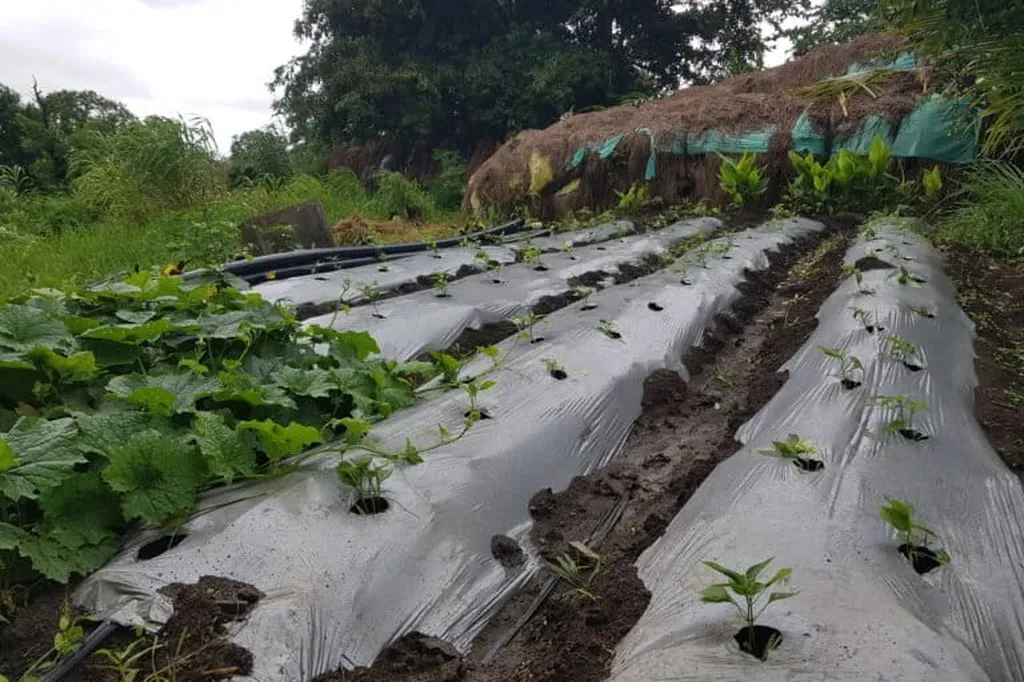In the heart of India’s agricultural landscape, a pressing concern is taking root—one that’s invisible to the naked eye but could have profound implications for soil health and crop productivity. Microplastics, those tiny fragments of plastic less than five millimeters in size, are increasingly finding their way into agricultural soils, and their impact on plant physiology and soil health is only just beginning to be understood. A recent study published in *Frontiers in Plant Science* sheds light on this emerging challenge, offering insights that could reshape agricultural practices and policies.
The research, led by Surjit Singh from the Department of Biotechnology at Sister Nivedita University in West Bengal, India, delves into the complex interactions between microplastics, soil, and plants. “Our study reveals that microplastics can alter soil properties and plant physiology in ways that we are only starting to comprehend,” Singh explains. This is not just an environmental issue; it’s a commercial one, with potential ramifications for farmers, agribusinesses, and food security.
Microplastics enter agricultural soils through various pathways, including sewage sludge used as fertilizer, plastic mulching films, and atmospheric deposition. Once in the soil, they can affect water retention, nutrient cycling, and microbial activity—key factors that underpin soil health and plant growth. “The presence of microplastics can disrupt the soil’s physical structure, making it harder for plants to access water and nutrients,” Singh notes. This disruption can lead to reduced crop yields and quality, directly impacting farmers’ livelihoods and the broader agricultural economy.
The study also highlights the potential for microplastics to act as vectors for heavy metals and other contaminants, further exacerbating their impact on soil health and plant physiology. “Microplastics can absorb and concentrate heavy metals, making them more bioavailable to plants,” Singh explains. This could lead to the accumulation of toxic substances in crops, posing risks to both plant health and human health through the food chain.
The commercial implications of these findings are significant. For instance, the use of plastic mulching films, a common practice in agriculture, could be re-evaluated in light of the potential risks posed by microplastics. Similarly, the application of sewage sludge as fertilizer, a practice that recycles nutrients but also introduces microplastics, may need to be carefully managed to minimize potential harm.
The research also opens up new avenues for innovation in the agriculture sector. The development of biodegradable plastics, for example, could offer a sustainable alternative to conventional plastics, reducing the risk of microplastic pollution. Similarly, the study underscores the importance of soil–plant–microbe interactions, a field that is ripe for further exploration and commercial application.
As the global population continues to grow, the pressure on agricultural systems to deliver more food, feed, and fiber will only intensify. Understanding and mitigating the impact of microplastics on soil health and plant physiology will be crucial to ensuring the sustainability and productivity of these systems. “This is a complex issue that requires a multidisciplinary approach,” Singh says. “But by working together, we can find solutions that protect our soils, our plants, and our food.”
In the face of this emerging challenge, the agriculture sector must adapt and innovate. The insights from this study, published in *Frontiers in Plant Science* and led by Surjit Singh from Sister Nivedita University, serve as a wake-up call and a roadmap for future research and action. The stakes are high, but so are the opportunities for those ready to rise to the challenge.

